#scientists on tumblr
Text
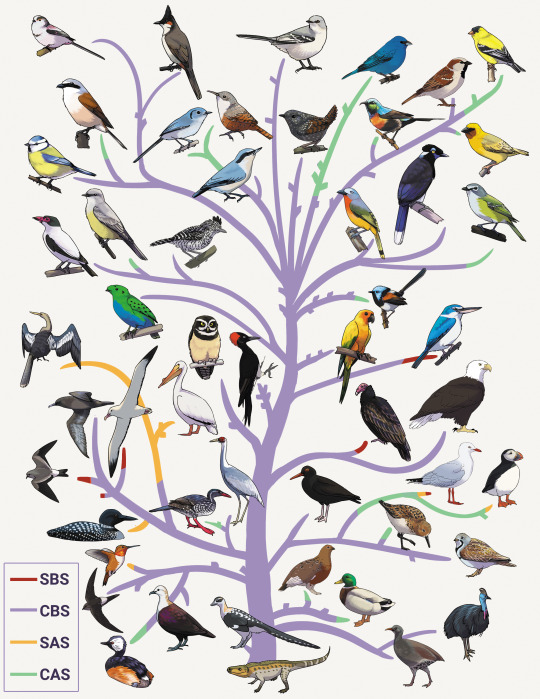
Out now in the Journal of Avian Biology! Pyle et al. 2024 discusses the evolutionary history of bird molt, and I was asked to illustrate this whole family tree in terms of molt strategies. I'm so pleased to have put this all together for the authors! This is a fairly technical topic and so I know how valuable it is to have an image to go along with it!
The Institute for Bird Populations has a post here that describes the paper, and includes a link to the high-resolution pdf of the above image as well as a link to the paper itself for those who really want to dig in deep. Check it out!
#birblr#birdblr#scientific illustration#molt#ornithology#bird evolution#evolution#scientists on tumblr#artists on tumblr#birds#birb#birbs
315 notes
·
View notes
Note
Oh you like frogs? Name every frog then
Current tally: 90 (1.18% of all described frogs)

#taxonomy#taxonomists on tumblr#not a lot of people on that tag I tell you what#scientists on tumblr#science#biology#frogs#frog#you could also just name every frog Charlie#boom done#but that feels a bit like cheating#1.18% feels like very little#but I am like the third or fourth most prolific amphibian taxonomist of the last decade#so I'm okay with >1%#anon#anonymous#answers by mark#also to be clear#as of 27 July 2023 there are 7629 frog species#including the new one we published yesterday#not even the guy who maintains the Amphibian Species of the World database#nor the people who maintain AmphibiaWeb#could possibly tell you all the names of all the frogs#not least because there's a decent chance that by the end of the recitation there would be a new one they didn't know about#not to mention all the disagreement about which species are or are not valid
882 notes
·
View notes
Text
For almost 25 years, Bhutan has been working to enhance the wildlife corridors which connect the country's protected areas. These provisions protect tigers, snow leopards, elephants, and drinking water. See how Bhutan is setting an example in our latest digest.
#wildlife corridors#environmental policy#bhutan#landscape ecology#conservation#science communication#scientists on tumblr
54 notes
·
View notes
Text
intro post!

hello! welcome to cybercity-sunrise. this blog is somewhat a studyblr, but i also post lots of art, science and sustainability content, poetry, and social justice resources. i'm hoping to meet people with shared interests and make more grad student friends!
about me: my name is avery; i'm 24 and currently based in the southwest USA. i am a first-year phd student in environmental engineering, with research focused on bioremediation. in undergrad, i studied plant biosciences and philosophy, both of which fueled my interest in building a world where everyone can enjoy a clean, healthy environment.
aside from school, i love being outside, reading (esp by huxley, butler, leguin, burroughs, and nietzsche), raving, drawing, gardening, and hanging out with my cat.
about this blog: when i was in high school, i followed a few phd students on here who blogged about their experience in grad school and the process of becoming a scientist. they were an invaluable resource for me, and now i hope to help the next generation of research-curious people. so if you have any questions about the application process, what grad school is like, getting started with research, etc, please don't hesitate to ask!
i also post lots of non-studyblr content, and try to tag posts pretty extensively. anyone aligned with the solarpunk movement will likely find posts of interest here :)
frequent tags:
#sunrise-says: any original posts with text
#grad-school-journey: original posts + some reblogs that just resonate with my experience
#art: all kinds of art!
#thoughts: quotes, literature, philosophy, interesting little snippets
#free-palestine: resources and updates regarding the ongoing genocide
#sustainability: news, resources, and ideas related to sustainability
#solarpunk: aesthetic and political solarpunk content
#nature: photography, art, and information regarding the natural world
Feel free to shoot me a message if you want to talk further about anything posted here or just want to say hi!
[background credit: luc schuiten avatar credit: mirjam siim]
7 notes
·
View notes
Text
Which kind of academic are you?

17 notes
·
View notes
Note
Oh, my bad! I'm new to your blog and your posts don't come up on my dash much, I didn't realize you didn't talk abt mammals too 😅
I try to stick to what I know so I make fewer mistakes. When you're in science you tend to have a lot of information in your brain, and you don't always update the things you learned that don't pertain to your research.
So, my expertise that I'm confident on falls into the realm of
- paleoecology in general
- phylogenetics in general
- dinosauria/avemetatarsalia as a group
- birds specifically
- paleogene birds specifically
- the paleogene, specifically
because I study birds during the paleogene period in their ecological context
while my knowledge on the history of life in general and biology is pretty good because I'm a holistic sort of person, I try to be careful with what I answer and how.
Being an educational blog, seen as an authority, is a responsibility - a huge one. Misinformation on the internet right now is an epidemic. I don't want to contribute to it more than necessary. I'm human, so I'll fuck up frequently, but the more I do to limit that, the better.
23 notes
·
View notes
Text

*Carlos' voice* THAT'S MY HUSBAND !!!
#congratulations dads 🥺#wtnv#wtnv fanart#cecil gershwin palmer#cecil wtnv#carlos the scientist#carlos wtnv#CECIL SWEEP#sexyman tournament#sexyman poll#tumblr sexyman#tumblr sexyrematch#tumblr sexymen poll#cecil palmer#sexyman#ultimate sexyman#night vale#welcome to night vale#welcome to nightvale#cecil baldwin#cecilsweep#tumblr#polls#my art#artists on tumblr#fanart#podcast#podcast fanart#cecilos
36K notes
·
View notes
Text

Siblings but in space
#I sketched these like two years ago but never did anything w them until now#baby shadow is the best thing to draw according to every scientist#sonic the hedgehog#shadow the hedgehog#maria robotnik#ark siblings#fanart#sonic adventure 2#fan comic#artists on tumblr#my art
7K notes
·
View notes
Text



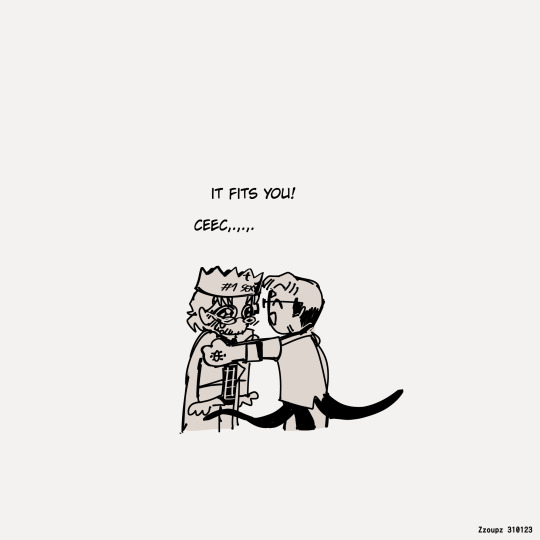
"Cecil would want Sans to win" "Sans would want Cecil to win" you fools. you buffoons. Cecil would want his husband Carlos to win
#went fuck it and posted it anyway PLEASE DONT GET MAD I KNOW ITS PROBABLY OOC PLEASE DONT GTE MAD#idea kind of from a post ive seen before but cant remember who it was SO#tumblr sexymen poll#sexyman tournament#cecilsweep#wtnv#welcome to night vale#wtnv cecil#wtnv carlos#cecil gershwin palmer#cecil palmer#carlos the scientist#cecilos#zoup art
36K notes
·
View notes
Text


*youth pastor voice* and do you know who is also goofy and a scientist and got isekaid to another dimension?
#YOU KNOW I HAVE TO SHOVE THE OHERWORLD THEORY IN THERE EVERY TIME I PUT SANS IN A SITUATION#anyway this just wouldnt leave my mind#undertale#sans#wtnv#welcome to night vale#cecil palmer#carlos the scientist#cecilos#myart#cecilsweep#sanssweep#tumblr sexymen poll
22K notes
·
View notes
Text

#the real scientific method#scientific method#science side of the internet#science side help me#science side#science side please explain#science side explain#science side of tumblr#mad scientist#memes#dank memes#dankest memes#mental meme#memes are my coping mechanism#memes are my love language#i’m offended by this relatable content#relatable memes#relatable shit#fresh memes
4K notes
·
View notes
Note
You should post more selfies! They're all super cute and there's so much joy in them and it's so good 😭
Thanks, anon!
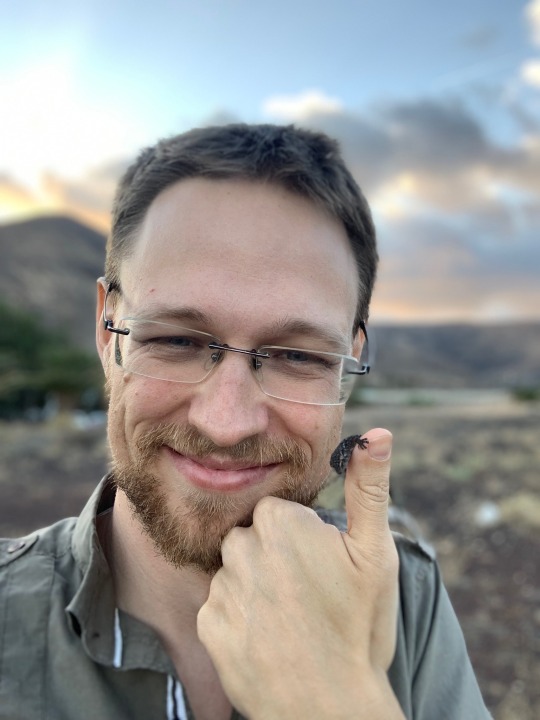
Here I am with Tarentola angustimentalis (a gecko) from my recent holiday to Fuerteventura :)
#selfie#my face#that thing on the front of my skull#gpoyt#gecko#sciblr#scientists on tumblr#answers by Mark#anon#anonymous
305 notes
·
View notes
Text
In conservation biology we think a lot about spatial configuration - how habitat is fragmented, or how it's connected, or how global patterns like biodiversity are determined.
What if we consider not only geographic space, but also climate space as well? Climate regions can cover the Earth just like geographic regions do, and can be quantified by spatial traits like area and fragmentation.
Come read our latest digest that explores research behind the geography of climate, and how it can be highly useful in explaining why species are found where they are.
#ecology#scientists on tumblr#climate change#habitat connectivity#landscape ecology#sci comm#conservation
22 notes
·
View notes
Text

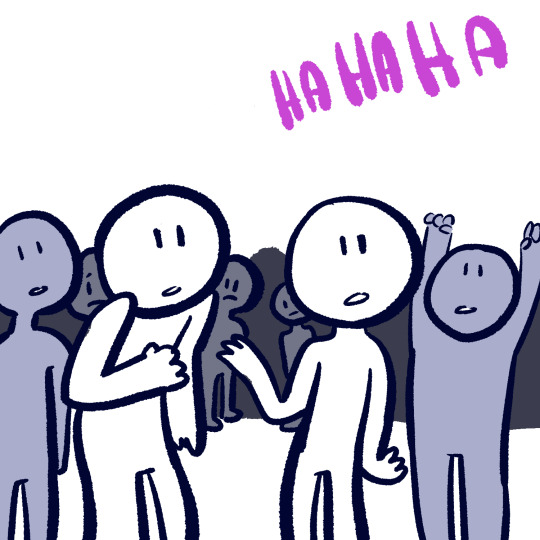


THE ORIGINAL SEXYMAN
Learn the history here: NightVale Influence on Tumblr
#welcome to night vale#wtnv#cecilsweep#art#digital art#cecil palmer#carlos the scientist#tumblr sexyman#you must respect him#this cecil is in honor to the original fanart designs made by the older fans#i see you
20K notes
·
View notes
Text
This is who's voting in the sexyman poll
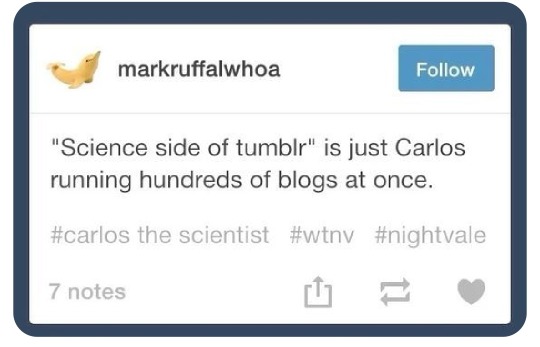
13K notes
·
View notes
Text
OKAY THIS ARTICLE IS SO COOL
I'm going to try to explain this in a comprehensible way, because honestly it's wild to wrap your head around even for me, who has a degree in chemistry. But bear with me.
Okay, so. Solids, right? They are rigid enough to hold their shape, but aside from that they are quite variable. Some solids are hard, others are soft, some are brittle or rubbery or malleable. So what determines these qualities? And what creates the rigid structure that makes a solid a solid? Most people would tell you that it depends on the atoms that make up the solid, and the bonds between those atoms. Rubber is flexible because of the polymers it's made of, steel is strong because of the metallic bonds between its atoms. And this applies to all solids. Or so everybody thought.
A paper published in the journal Nature has discovered that biological materials such as wood, fungi, cotton, hair, and anything else that can respond to the humidity in the environment may be composed of a new class of matter dubbed "hydration solids". That's because the rigidity and solidness of the materials doesn't actually come from the atoms and bonds, but from the water molecules hanging out in between.
So basically, try to imagine a hydration solid as a bunch of balloons taped together to form a giant cube, with the actual balloon part representing the atoms and bonds of the material, and the air filling the balloons as the water in the pores of the solid. What makes this "solid" cube shaped? It's not because of the rubber at all, but the air inside. If you took out all the air from inside the balloons, the structure wouldn't be able to hold its shape.
Ozger Sahin, one of the paper's authors, said
"When we take a walk in the woods, we think of the trees and plants around us as typical solids. This research shows that we should really think of those trees and plants as towers of water holding sugars and proteins in place. It's really water's world."
And the great thing about this discovery (and one of the reasons to support its validity) is that thinking about hydration solids this way makes the math so so so much easier. Before this, if you wanted to calculate how water interacts with organic matter, you would need advanced computer simulations. Now, there are simple equations that you can do in your head. Being able to calculate a material's properties using basic physics principles is a really big deal, because so far we have only been able to do that with gasses (PV=nRT anyone?). Expanding that to a group that encompasses 50-90% of the biological world around us is huge.
#science#stem#science side of tumblr#stemblr#biology#chemistry#scientists#biochemistry#studyblr#physics#nature
6K notes
·
View notes